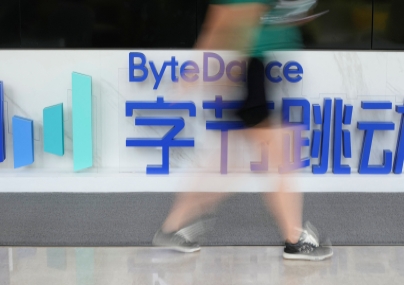
Skip to
The number of cases filed to the China International Economic and Trade Arbitration Commission (CIETAC), for example, has more than doubled in the past decade, jumping from 981 cases in 2006 to 2181 in 2016.
A vast majority of such cases (1,698 cases) were domestic cases, up 10.9 percent compared to 2015; and there were 483 disputes involving foreign entities in 2016, an increase of about 10.5 percent year-on-year.
The CIETAC highlighted in its 2016 annual report that the average disputed value per case had increased to a record high at CNY26 million. The center also saw cases of new practice areas coming in, including 171 cases related to equity investment transfer and 151 cases related to financial leasing.
“Commercial entities’ awareness of using arbitration has been largely boosted in China,” says Cui Haiyan, managing partner of Zhejiang Brighteous Law Firm.
Cui adds that one of the main drivers is the booming of arbitration institutions.
“Arbitration centers have become more and more active in the past couple of years; for example, the setup of the CIETAC Hong Kong Arbitration Center, and more foreign arbitration organizations are also launching their offices in China. With events and forums held by such organizations, the market has been invigorated,” says Cui.
Currently there are more than 200 arbitral institutions in the country, actively offering dispute resolution services.
The dynamic atmosphere is also strengthened by the rapid economic growth in the country. After the 1990s, the CIETAC’s Arbitration Rules, for example, have been updated more frequently than before, usually every two or three years. This matches the pace of the country’s economic development. Since the opening up and reform three decades ago, China, with a much higher than average growth rate, is now the second largest economy in the world.
“Along with the prospering of the business activities, an increasing number of commercial disputes is inevitable. Given the limited number of judges in the court system, it is difficult to meet the accelerated increase in demand for commercial dispute resolution,” says Cui.
The way Cui sees it is that arbitrators are usually at the frontline battling with new issues emerging, which drives more enterprises to turn to arbitration.
“New terms come out quickly, such as the valuation adjustment mechanism and private placement; also there are new business models, fintech, for example,” says Cui. “Lawyers with a particular focus in the equity market have a deeper understanding in those areas and have faster response and judgment to new issues, as they are dealing with real cases every day.”
Innovative commercial models along with the emerging fintech in China account for nearly half of the global market size. Online lending in China, for example, occupies about 75 percent of the global market. Alibaba’s Ant Financial, the largest Chinese fintech company, has been valued at about $60 billion, on par with UBS, Switzerland’s biggest bank.
While sectors like fintech boom overnight, laws and regulations for them cannot come into place that fast. It takes time, which is a common situation as laws are always lagging behind practices. Court staff who deal with general contract disputes or traditional industries, such as properties and constructions, as a result need more time to hear such cases.
Concerns over commercial and business private information also push more companies to adopt arbitration.
“It is not difficult to understand that shareholders, potential investors and the market will worry that the company’s reputation and credibility will be sabotaged once it is in a court hearing. What worries a company more is that once it enters litigation, a bunch of information will be public, while the company’s information is not searchable online if the dispute is solved at an arbitration institute,” says Cui.
Back to topNEED FOR REVISION
Despite the increased attention and awareness, commercial disputes resolved through arbitration are still a minority. In 2014, it only accounted for about 4 percent of cases resolved through litigation.
“We’ve evolved a lot; however, arbitration in China is still not a mainstream choice for dispute settlement,” Lu Yunhua, Deputy Head of the Preparative Group of the Arbitration Association of the Legislative Affairs Office, State Council, said in a seminar in Jilin last year. “There is still much room for further development.”
Jiang Jingye, a partner with Global Law Office who has handled various cases with arbitration tribunals in major arbitration institutions, echoes the idea and said that revision of China’s Arbitration Law is imperative.
“We have some pretty well-established arbitration organizations, such as the CIETAC, China Maritime Arbitration Commission, Beijing Arbitration Commission, etc… However, currently there are more than 200 arbitration institutions in the country, and loopholes are inevitable without legal and proper supervision on these arbitration commissions,” says Jiang.
Many commercial entities turn to arbitration organizations in the hopes of getting disputes solved in a faster and more professional way; however, sometimes the results do not meet expectations.
“Sometimes an award could be put off for years although every previous step has been taken,” says Jiang.
A key reason for the setback highlighted by Jiang is that the basic framework for revision of the Arbitration Law is lagging behind.
The People’s Republic of China Arbitration Law was promulgated in 1994, and came into force in 1995. The law has not been updated since then and problems have emerged from practices over years.
“For example, the jurisdictional disputes in arbitral proceedings should be decided by an arbitration institution according to Article 20 of the law. But as a matter of fact, it was found that in more and more cases the jurisdictional disputes were so closely connected with the evidence and merits of the case that the jurisdictional disputes could not be decided unless and until evidence had been examined and the merits had been tried," Chen Jian, Director of the CIETAC International Case Division, wrote in a recent article titled “The Future of Commercial Arbitration in China.”
"The Rules of Arbitration of CIETAC and others were thus revised to provide that the power to decide on the jurisdictional disputes might be delegated to the arbitrators when necessary. However, there are still a number of problems waiting to be resolved, whose resolution, actually, need to be based upon the revision of the Arbitration Law in the future,” noted the article.
Another example is that according to Article 15 of the Arbitration Law, the China Arbitration Association, which refers to a self-disciplined organization of arbitration commission, shall be in place to supervise arbitration commissions and their members and arbitrators as to whether or not they breach discipline.
“However, the Association, which is specified by law as the organization with the key function in overseeing the arbitration sector, has not been set up yet. Most provincial arbitration institutions are currently established by local justice bureaus. Although it is uncertain whether the Association would be able to properly play its legal role, the administration of arbitration institutions and their management would promote self-development among them. The arbitration commissions should operate in accordance with the market rule of survival of the fittest,” says Jiang.
Looking forward, with the anticipated growth of foreign trade and especially the development of the Belt & Road Initiative, it is likely that commercial arbitration, particularly cases involving foreign elements, will increase.
Jiang agrees that the demand for arbitration is on the rise and expressed confidence in the amendment of China’s Arbitration Law.
“Most practitioners see eye to eye on the need for revision and an update of the law. With better communication with the legislative side, it is foreseeable that revision will take place in the coming five to ten years,” says Jiang.
Back to top


